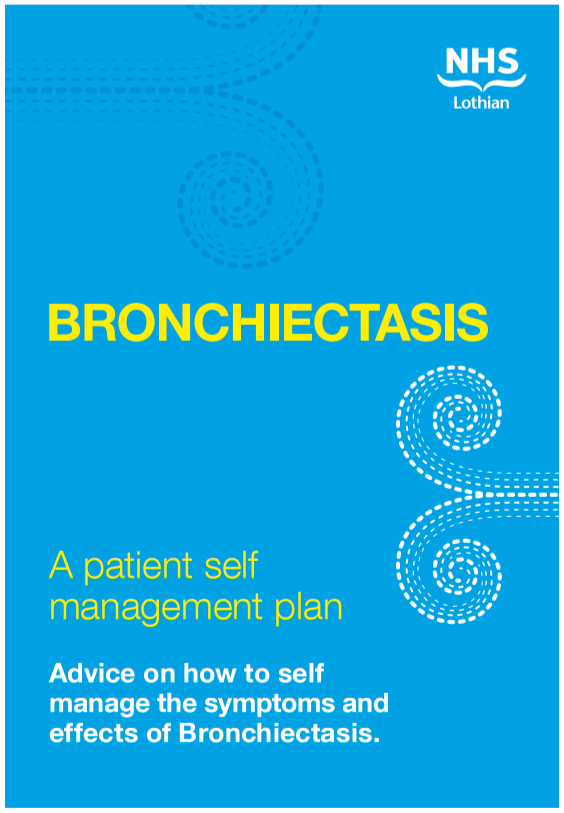The treatment plan will be tailored to your specific circumstances and will also depend on how severe your bronchiectasis is. Your consultant or specialist nurse will also help you develop a self-management plan for coping with your bronchiectasis at home. If you don’t have one, ask for a self-management plan at your next clinic visit.
A wallet-sized bronchiectasis card to record chest infections with advice on management, including the recommended antibiotics for chest infections, is also available.
So what is a self-management plan?
The aim of the self-management plan is to make sure you have information to be able to recognise when your bronchiectasis is getting worse, and to give you advice on what to do if this happens. We hope that this will give you the confidence and skills to take some control over managing your symptoms yourself and help you avoid having to be admitted to the hospital.
Knowing your normal!
It’s important that you know what your symptoms are like when you are well and not having a chest infection. If you know this, it will be easier to spot the changes which might mean you are getting an infection. The things to be aware of are:
- How often you cough
- How often you cough up sputum
- What colour your sputum is
- How much sputum you usually produce
- The condition of your sputum e.g. is it watery or sticky?
- The circumstances where you become breathless e.g. walking around the house, walking up-stairs, playing sports
- And any other usual symptoms like wheezing or fatigue
Your doctor or nurse will help you with these questions and make a note of the answers on your self-management plan so you can have it at home to refer back to. You may also want to take a photo of your self-management plan on your phone so it more readily available. Or give a copy to a family member or friend. Changes may be a sign that you are developing a chest infection.
I’ve seen signs of changes – what now?
- Clear your chest more often
- Take your medication and inhalers
- Drink plenty of fluids
- Collect a sputum sample and hand it in to your GP as soon as possible (if you can’t get the surgery that day, keep the sample in the fridge overnight)
- Some colds get better without needing antibiotics. If there is no change in the amount or colour of sputum, do not start antibiotics
- Get help if you need it.
- For guidance of when to seek help with your bronchiectasis go to Guide – when to seek help
Last Reviewed -10th July 2019

